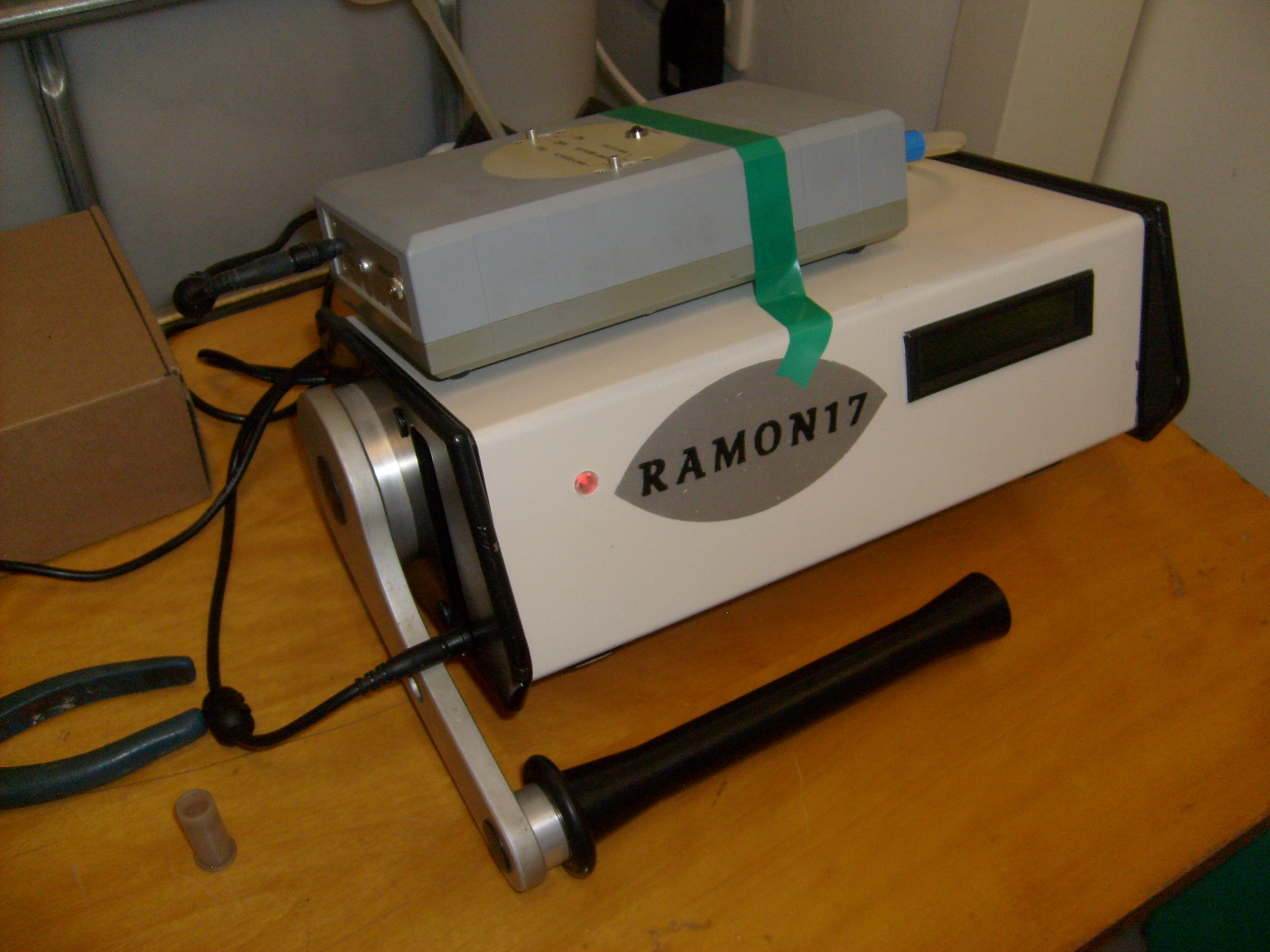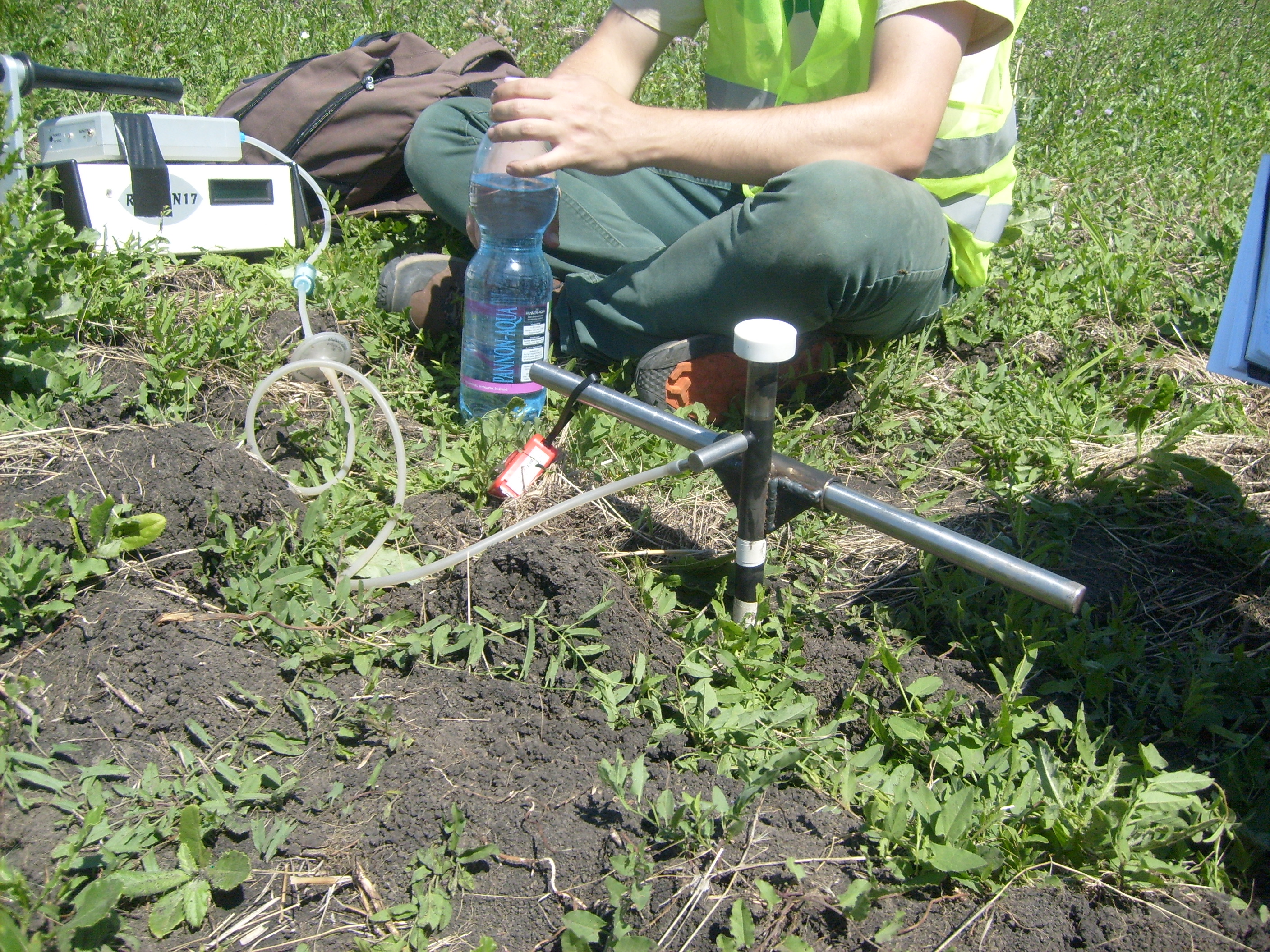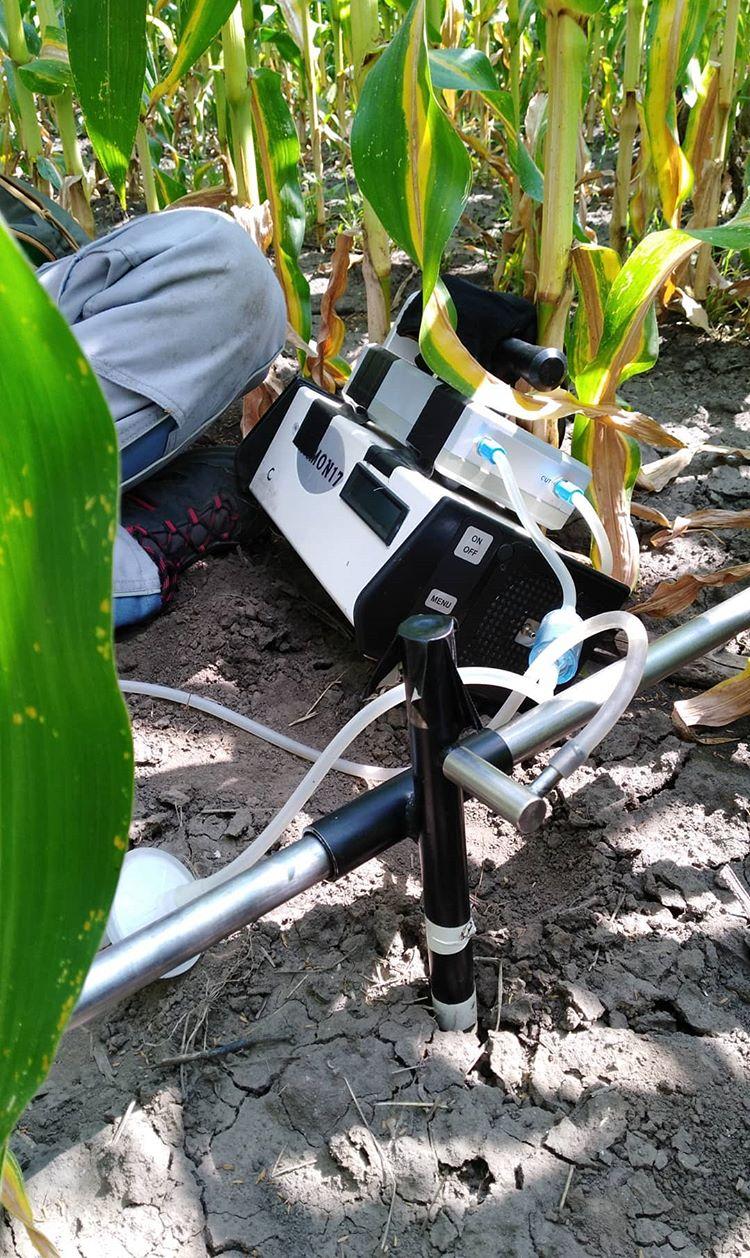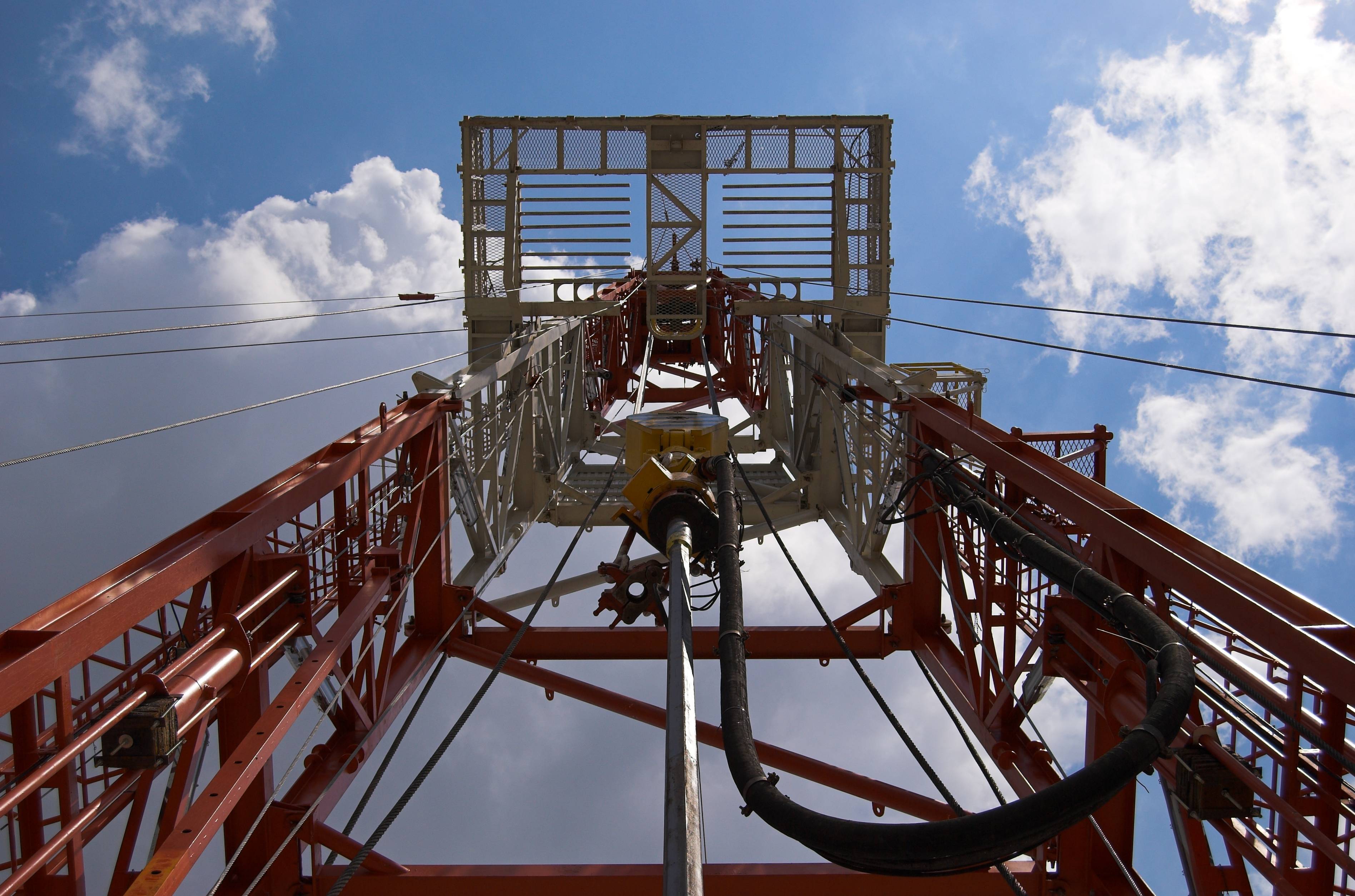
Almost 50% of the radioactive background radiation is caused by the radon released from the soil into the airspace. Radon is always present in the air of houses, where it can also be highly concentrated in specific cases.
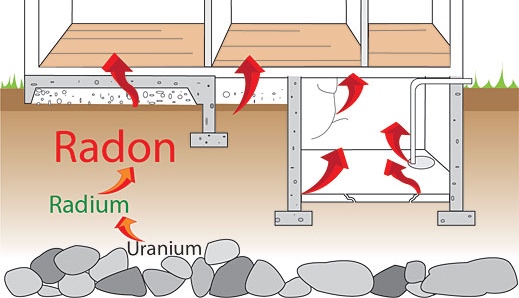 |
Breathed radon will be especially dangerous when its decomposition products stick on the surface of the lung. As the effective range of the particles in the living tissue is about 30 μm, most of the radiation is blocked by the dead epithelial cells covering the skin; therefore, the radon present in the air is dangerous only to the lung; and any damage to other tissues or organs is practically impossible. Based on clinical and histological examinations, the places where cancer develops due to radon are mostly the tips of branches of the central airways. According to the researches made by the University of Oxford, the radon accumulating in enclosed areas (e.g. apartments) is responsible for 9 % of lung cancer cases and 2 % of all cancer illnesses.
After cigarettes, radon is the second most carcinogenic factor to the lung; therefore, according to recommendation no 2001/928/Euratom of the European Commission, the level of radon load shall be examined in the member states of the European Union, and the member states shall take the measures necessary for the neutralization of the radon gas.
At areas contaminated with chemicals (e.g. a closed-down gas station or plant area) or at the site of accident of a vehicle transporting hazardous material (e.g. spilled-out fuel oil – TPH, BTEX, PAH compounds): any spilled contaminations might flow away before the decontamination depending on the geologic properties of the soil; therefore, the quick and accurate delimitation of the contamination is important also due to environmental reasons. The rapid detection of the radon concentration allows for effective delimitation, ensuring non-destructive, cost-effective examinations without an ecological footprint.
One of the most common, empiric (passive) examinations, where a plate (detector) made of a special material is placed out in a capsule or a box in a specific space for a long time. The capsule will be dug in the earth, while the box will be placed next to the bed. The radon gas released from the earth or accumulating in the room will get into the capsule or the box, and, hitting the detector, will leave a mark visible only by a microscope. After a specified time, the detector is taken out from the box or the capsule, and examined through a magnifier or a microscope. The level of radon load can be determined on the basis of the plate size, the number of particle “hits”, and the time elapsed.
The most common method of measuring the radon present outdoors is the soil probe (active) examination, where the radon probes are struck down to 1 meter depth one after the other at points determined in accordance with a specific scheme. A detector equipped with a pump is attached to the end of the pipes sticking out of the ground, which sucks a given amount of soil air within a specified time, and examines and analyzes its composition. To ensure reliability, the measurement shall be repeated at least twice, and after the sampling, the procedure shall be repeated with the same drive-down probe at a distance of 10-15 meters again and again until – taking also the geological parameters of the area into consideration – enough samples have been collected. The radon load potential of the area can be determined on the basis of the samples.
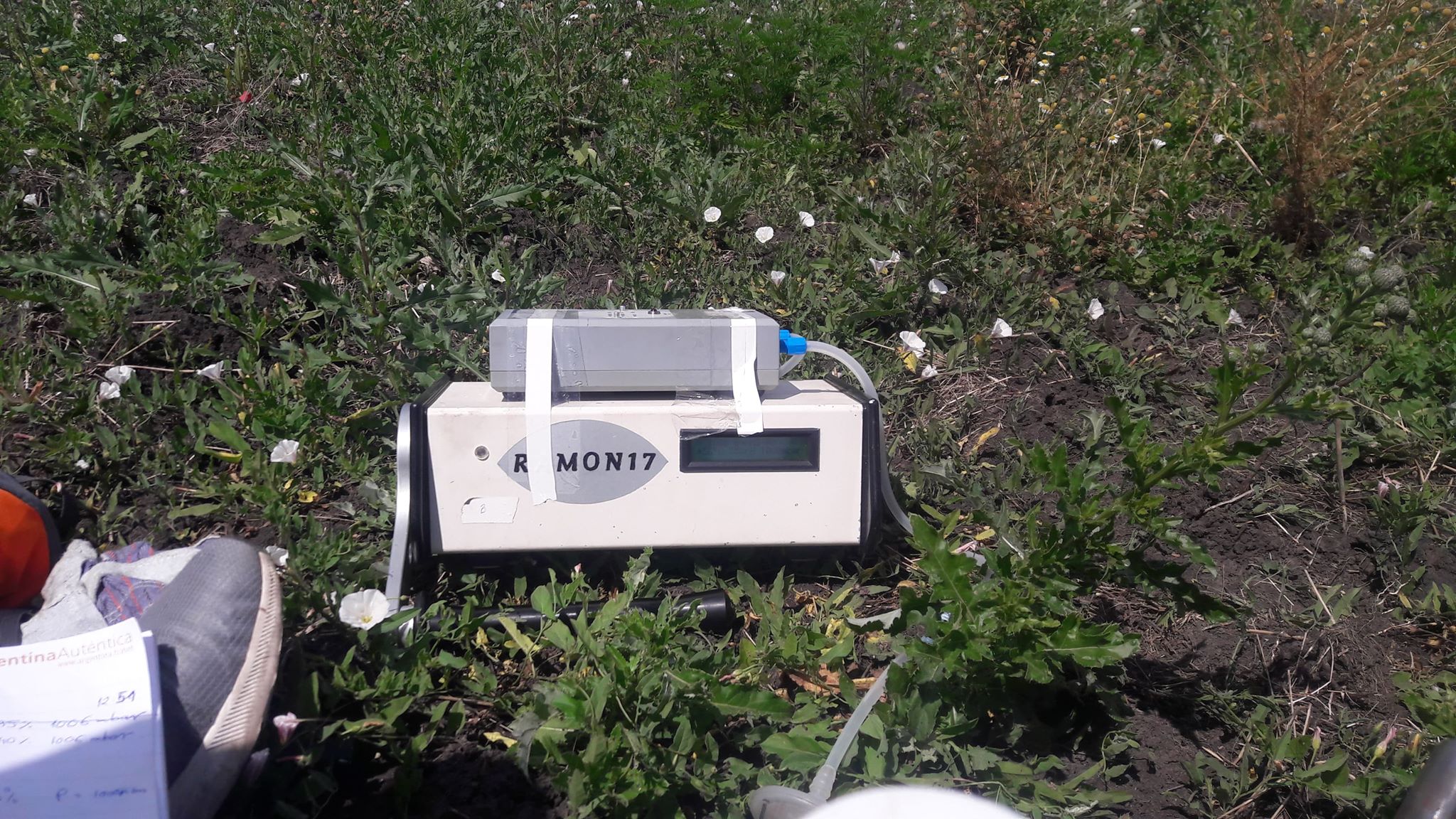 |
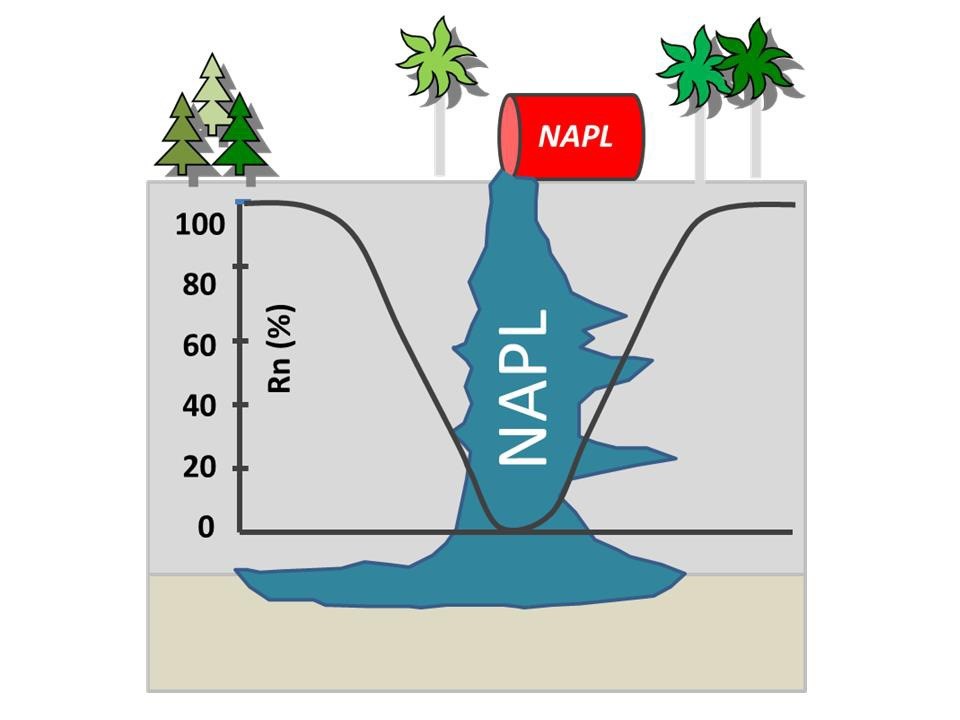 |
In the frames of a unique order, Mining Support Kft. performed about 5000 instrumental measurements and tests for the determination of the radon content of the soil in Hungary in 2012. During the examinations, the company has gained practical experience in the applicability of radon measurement technologies which were used only for research goals beforehand, and had the opportunity to develop a new measurement- and diagnostic procedure.
The European Commission’s Euratom recommendation expects the countries’ entities carrying out radon potential examinations to perform tasks for which they are not prepared. Thanks to the new radon probe technology being developed by the Mining Support Kft., the company will be the first on the market to possess a technology which is able to carry out a large number of measurements, and ensure the credibility of the measured data by reference examinations with a unique method.
